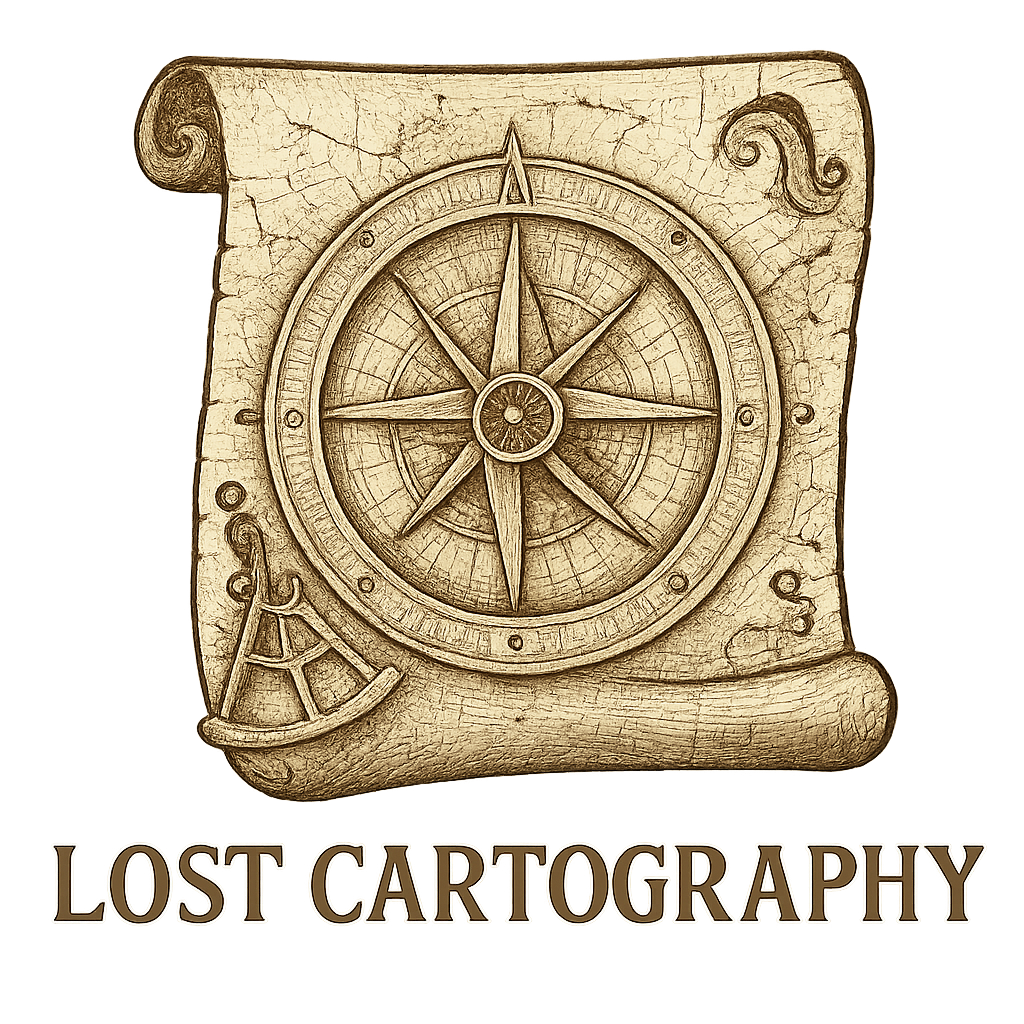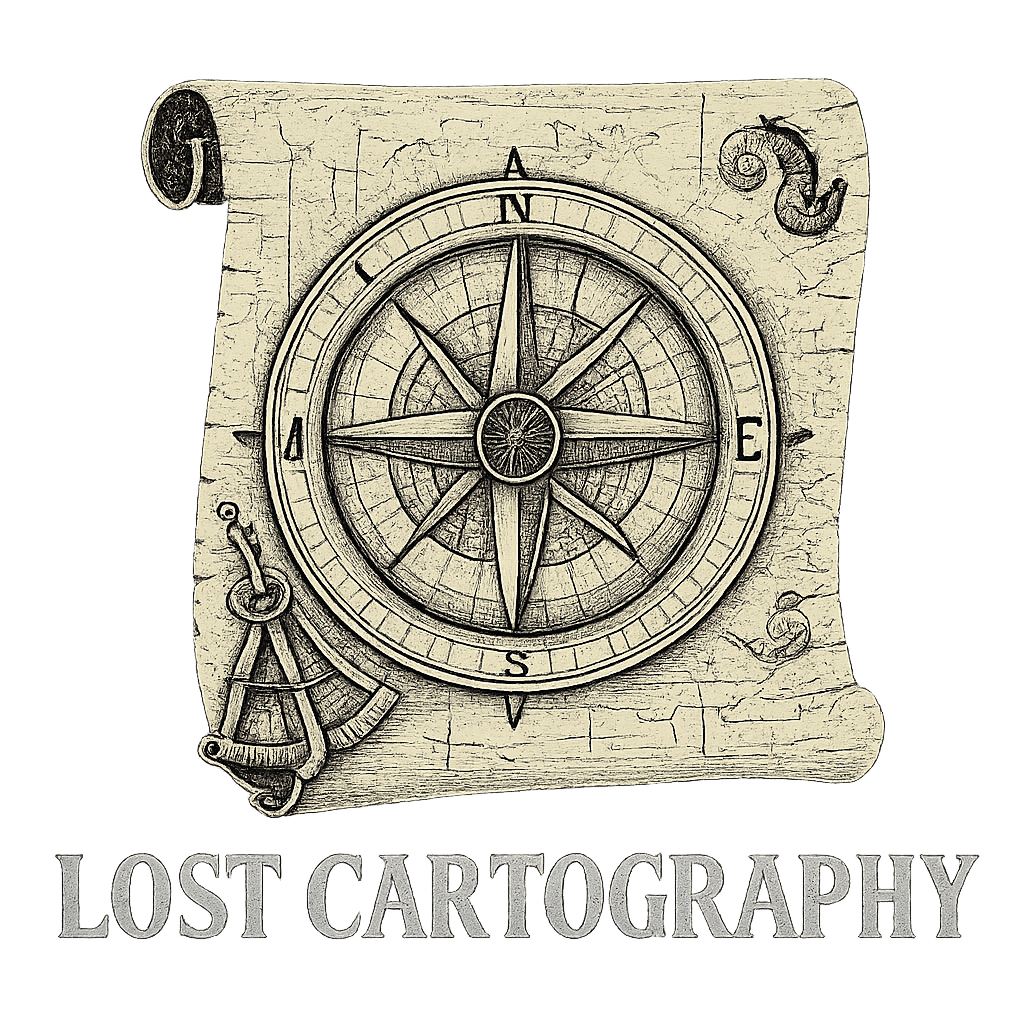Now Reading: The Greatest Map Hoaxes in History: Myths, Lies & Misinformation
-
01
The Greatest Map Hoaxes in History: Myths, Lies & Misinformation

The Greatest Map Hoaxes in History: Myths, Lies & Misinformation
Maps have always been powerful tools for understanding our world, guiding exploration, and shaping human knowledge. However, there is a fascinating side to cartography that involves deception – map hoaxes that have intrigued, puzzled, and sometimes even altered the course of history.
Map hoaxes are intentional attempts to mislead through false or manipulated representations on maps. These deceptions can range from elaborate forgeries claiming ancient discoveries to carefully crafted visual lies serving political, social, or personal agendas. The impact of these fraudulent maps goes beyond mere geographic misrepresentation – they have influenced international relations, scientific understanding, and cultural beliefs.
The art of mapmaking has always held tremendous power. Maps don’t just show us where things are; they shape how we see our world and our place in it. This power makes them perfect vehicles for deception, as demonstrated by notorious cases like:
- The Vinland Map – a purported pre-Columbian map of North America
- The Great Moon Hoax – featuring fabricated lunar landscapes
- The Cardiff Giant – supported by falsified geological maps
- The Dreadnought Hoax – exposing naval security weaknesses
- The Cottingley Fairies – using visual deception to capture imagination
- The Miyagi Prefecture Hoax – altering archaeological understanding
These famous map frauds reveal how cartographic misinformation has played a crucial role in some of history’s most intriguing deceptions. What drives people to create these elaborate hoaxes? How do they manage to deceive experts and the public alike?
1. The Vinland Map: A Forged Piece of History
In 1965, Yale University revealed the Vinland Map, causing a huge stir in the academic world. This parchment map seemed to show that the Norse explored North America long before Columbus did. It featured a landmass called “Vinlanda Insula,” which matched descriptions from Norse sagas about a territory west of Greenland.
Initial Authentication Seemed Promising
At first, it looked like the map was genuine. The old parchment and medieval Latin inscriptions convinced many scholars that it was real. Yale University Press published a book titled “The Vinland Map and the Tartar Relation,” promoting it as groundbreaking evidence of pre-Columbian Norse presence in North America.
Scientific Analysis Revealed a Different Truth
However, scientific analysis later exposed the truth. Research teams found:
- Modern titanium dioxide particles in the ink, a substance not manufactured until 1920
- Inconsistencies in the aging pattern of the parchment
- Anachronistic elements in the map-making techniques
- Chemical composition that did not match medieval manuscript inks
The Vinland Map stands as one of history’s most sophisticated Historical Map Lies. This forgery disrupted academic understanding of Norse exploration and medieval cartography for decades.

Impact on Academia and Yale’s Reputation
The exposure of the map as a modern creation led to renewed interest in using scientific methods to authenticate historical documents. While this revelation damaged Yale’s reputation, it also strengthened verification protocols for historical artifacts.
Despite its fraudulent nature, the Vinland Map controversy enhanced scholarly understanding of medieval map-making techniques and documentation of Norse exploration.
2. The Great Moon Hoax: Cartography and Sensationalism
In the summer of 1835, one of history’s most audacious Cartography Scandals occurred when The New York Sun published a series of articles claiming the discovery of life on the moon. The newspaper’s “astronomical breakthrough” came from a fictitious astronomer who allegedly used an advanced telescope to observe lunar landscapes teeming with life.
The Contents of the Articles
The articles featured intricate maps and illustrations depicting:
- Vast crystalline formations
- Lunar beaches with blue waters
- Flying bat-like creatures
- Humanoid beings covered in copper-colored fur
- Sophisticated architectural structures
These fabricated lunar maps sparked unprecedented public fascination. The Sun’s circulation skyrocketed from 8,000 to over 19,000 copies daily, demonstrating how sensational journalism could manipulate public perception through visual deception.
The Factors Behind the Success of the Great Moon Hoax
The Great Moon Hoax’s success relied heavily on the public’s limited scientific knowledge and their trust in printed media. The detailed cartographic “evidence” presented by The Sun exploited this trust, creating a compelling narrative that many found impossible to dismiss.
When the truth emerged, the incident highlighted how map hoaxes could be used for propaganda and profit. The hoax permanently altered the relationship between media and audience, establishing a precedent for questioning seemingly authoritative visual representations in news reporting.
3. Cardiff Giant: The Intersection of Myth and Geology
In 1869, workers digging a well in Cardiff, New York, discovered what looked like a 10-foot-tall petrified human – a finding that would turn out to be one of America’s most infamous archaeological hoaxes. The Cardiff Giant appeared during a time when the American public struggled with religious fundamentalism and scientific discoveries.
The Man Behind the Hoax
George Hull, a tobacconist and atheist, orchestrated this elaborate deception after a heated debate with a Methodist reverend about biblical giants. Hull commissioned a massive block of gypsum, secretly carved it into a “petrified man,” and buried it behind his cousin’s barn.
Exploiting Beliefs
The hoax took advantage of widely held beliefs:
- Religious interpretations of Genesis 6:4: “There were giants in the earth in those days”
- Popular fascination with archaeological discoveries
- Public trust in scientific authorities
Maps as Tools of Deception
Maps played a crucial role in legitimizing the Giant’s story:
- Fabricated geological surveys suggested the presence of similar specimens
- Detailed site maps highlighted supposed “ancient burial grounds”
- False documentation of “giant” discoveries across New York state
The Impact of the Cardiff Giant
The Giant attracted thousands of paying visitors at 50 cents per view. Even when P.T. Barnum created his own replica after failing to purchase the original, public interest persisted. The Cardiff Giant demonstrated how visual evidence – including maps and geological charts – could authenticate elaborate deceptions by appealing to both scientific curiosity and religious conviction.
4. The Dreadnought Hoax: Naval Deception and National Pride
The Dreadnought Hoax of 1910 exposed significant vulnerabilities in British naval security during a critical period of military tension. Horace de Vere Cole, a notorious prankster, orchestrated an audacious scheme that would embarrass the British Royal Navy and challenge their prestigious reputation.
The Prank Unfolds
Cole assembled a group of conspirators, including a young Virginia Woolf, disguising them as Abyssinian royalty through the creative use of dark makeup, elaborate costumes, and fabricated credentials. The group spoke in a made-up language consisting of random Latin and Greek phrases, yet remarkably gained access to HMS Dreadnought – Britain’s most advanced battleship.
Consequences of the Hoax
The prank’s success sparked intense debates about military security protocols:
- Naval officers failed to verify the delegation’s authenticity
- No proper diplomatic channels were consulted
- Security measures proved inadequate against simple disguises
- Communication barriers were not properly addressed
The British Royal Navy’s reputation suffered a significant blow when news of the deception spread. Military leadership scrambled to implement stricter verification procedures and enhance security measures across all naval facilities.
Lessons Learned
This incident highlighted how perceived national superiority could breed complacency in military readiness. The British Royal Navy, considered the world’s most powerful naval force, had fallen victim to a group of amateur actors wielding nothing more than costumes and confidence.
The Dreadnought Hoax remains a stark reminder of how deception can penetrate even the most formidable military establishments, forcing organizations to confront their vulnerabilities and reassess their security protocols.
5. Cottingley Fairies: Visual Deception in Photography
In 1917, two young cousins from Cottingley, England, captured the imagination of a nation with their remarkable photographs of fairies dancing in their garden. Elsie Wright, 16, and Frances Griffiths, 9, armed with a simple Midg quarter-plate camera, produced five photographs that would spark decades of debate about the existence of supernatural beings.
The images showed delicate, winged creatures interacting with the girls in their garden. These Cottingley Fairies gained significant credibility when Sir Arthur Conan Doyle, creator of Sherlock Holmes, championed their authenticity in The Strand Magazine. His endorsement reflected the era’s growing interest in spiritualism and supernatural phenomena, particularly in the aftermath of World War I.
The staged photographs tapped into deep-rooted cultural beliefs about fairy folklore:
- The images appeared during a time when photography was considered irrefutable evidence
- Victorian-era artwork heavily influenced the fairies’ designs
- The public’s desire to believe in magic overshadowed obvious technical inconsistencies
The truth emerged in 1983 when the cousins admitted the fairies were paper cutouts from a children’s book, secured with hatpins. This revelation transformed the Cottingley Fairies into a powerful example of how visual manipulation can shape collective beliefs, highlighting our vulnerability to convincing imagery – a lesson particularly relevant in today’s digital age.
6. The Miyagi Prefecture Hoax: Archaeological Misrepresentation
The Miyagi Prefecture Hoax stands as one of archaeology’s most damaging deceptions. In 2000, Japanese archaeologist Shinichi Fujimura earned the nickname “God’s Hands” for his remarkable ability to uncover ancient artifacts. His discoveries pushed back the timeline of human habitation in Japan to an astounding 500,000 years.
The Truth Behind the Discoveries
Hidden cameras revealed the truth behind Fujimura’s “discoveries.” Footage showed him planting artifacts at the Kamitakamori site in Miyagi Prefecture during pre-dawn hours. These planted items included stone tools and implements he had collected from other archaeological sites.
Impact on Japanese Archaeology
The impact on Japanese archaeological studies proved devastating:
- 180 archaeological sites required re-examination
- 65 published papers needed retraction
- Decades of Japanese prehistory demanded complete revision
The hoax exposed critical weaknesses in archaeological verification processes. Before the revelation, few questioned Fujimura’s findings despite their extraordinary nature. His status as deputy director of the Tohoku Paleolithic Institute lent credibility to his claims.
Changes in Archaeological Practices
The scandal sparked significant changes in Japanese archaeology:
- Implementation of stricter verification protocols
- Enhanced documentation requirements
- Increased emphasis on peer review
- Mandatory photographic evidence of excavation processes
This case demonstrates how a single individual’s deception can reshape historical narratives and highlights the vital importance of rigorous scientific methodology in archaeological research.

Conclusion: The Enduring Legacy of Map Hoaxes in History
Map hoaxes have profoundly shaped human understanding and beliefs across centuries. These deceptive cartographic works demonstrate humanity’s capacity for both ingenuity and gullibility. From the Vinland Map’s attempt to rewrite exploration history to the Miyagi Prefecture’s archaeological deceptions, each hoax reveals our deep-seated desire to believe in extraordinary claims.
The impact of forged maps extends beyond mere historical curiosity:
- They challenge established narratives and power structures
- They expose vulnerabilities in scientific and academic verification processes
- They highlight the persuasive power of visual “evidence”
The persistence of map hoaxes teaches us an essential lesson: skepticism serves as our strongest defense against deception. In today’s digital age, where manipulated images and data spread rapidly, the ability to question and verify cartographic claims becomes increasingly crucial. These historical deceptions remind us that maps, despite their authoritative appearance, can be powerful tools of misinformation when wielded by skilled deceivers.
The study of map hoaxes equips us with critical thinking skills necessary for navigating both historical records and contemporary cartographic claims.
























